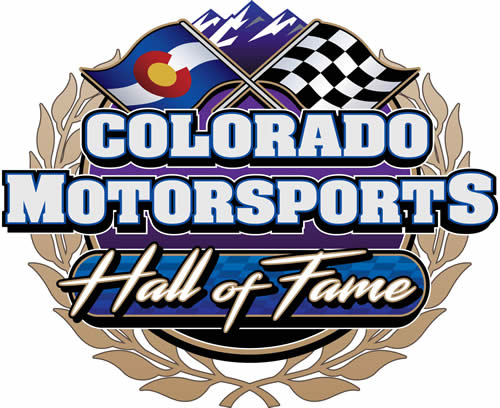
Edwin “Tex” Arnold
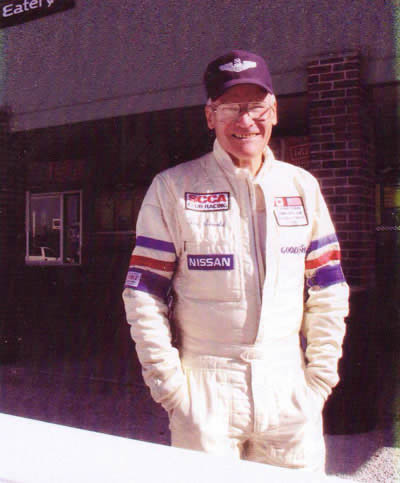 Edwin “Tex” Arnold was born in 1933, in Staten Island, Borough of Richmond, New York. Tex graduated from Lehigh University in 1955, with a Bachelor of Science degree and Second Lieutenant bars. After graduating “Top Gunner” in numerous pilot training classes, Tex’s first operational assignment was the 405th Fighter/Bomber Wing at Langley AFB, Virginia, flying F-100’s. He would serve in the Air Force for the next 20 years including a tour of duty in Southeast Asia in 1966 where he flew 136 combat/combat support missions. He retired from the Air Force with the rank of Lt. Colonel in 1977.
Edwin “Tex” Arnold was born in 1933, in Staten Island, Borough of Richmond, New York. Tex graduated from Lehigh University in 1955, with a Bachelor of Science degree and Second Lieutenant bars. After graduating “Top Gunner” in numerous pilot training classes, Tex’s first operational assignment was the 405th Fighter/Bomber Wing at Langley AFB, Virginia, flying F-100’s. He would serve in the Air Force for the next 20 years including a tour of duty in Southeast Asia in 1966 where he flew 136 combat/combat support missions. He retired from the Air Force with the rank of Lt. Colonel in 1977.
Tex’s racing career began in 1961 competing in local autocross, gymkhana and rally events. In 1962, he earned his Sports Car Club of America competition license. In 1964 and 1965, he competed in the G Modified Class. He then earned an invitation to the American Road Racing Championship at Daytona. He ran as high as third place before an engine malfunction dropped him to a sixth place finish.
Beginning in 1967 Tex competed in A Sports Racing class in the Northeast for several years. In 1970, he competed in the South Central and Southwest regions of the SCCA in the Formula B class. In 1973 and 1974, he competed in the C production class. In 1975, he competed in the sports racing class in the Midwest. In 1976, he won the Midwest Division Championship.
After retiring from the Air Force in 1977 Tex decided to go professional racing. He competed in the Can-Am series at events across the U.S. and Canada, finishing third in the 2 Liter class. In 1978, he was hired by the SCCA to serve as director of club racing. He also competed in the A Sports Racing class. In 1979, he competed in the Formula B class. In 1980, he was hired to be manager of Sears Point Raceway in Sonoma, California.
In 1981, he worked for FAF Motorcars, rebuilding Ferrari engines. He drove a Ferrari Tour de France in the Sebring Vintage Race that year finishing first in class and second overall. He was then hired by Group 44 to work on the Jaguar GTP project. In 1983, he was hired by Automobiles International to race-prep more than 20 race cars for mainly historic and vintage races.
In 1984, Tex was hired by Forristall’s GT Cars to race-prep cars from the John Mecom stable. Also that year he co-drove with Toly Arutunoff in the very first One Lap of America. In 1985, he went to Walker Racing to race-prep mostly Ferrari Race cars. In 1986, Tex worked with the Texas American Race Team to convert Ex-Indy cars to newly designed CAN-AM cars. In 1987 and 88, he returned to Toly Arutunoff’s AI shop to race-prep cars. He also drove in SCCA events and teamed with Arutunoff to drive at Sebring in the Firehawk Series. From 1990 to 1993, he worked for Jack Beck at Orion Engineering, rebuilding and race-prepping a wide range of SCCA and historic cars. In 1997, he moved to Parker, Colorado, and has won eight SCCA Rocky Mountain Divisional Championships between 1998 and 2012. His current ride is a Formula Continental Van Dieman.
Throughout his racing career, Tex has held many SCCA regional and executive offices, has won more than a dozen division championships, has worked on, race-prepped and driven some of the most complex race cars in the world. He has competed against the likes of Sir Stirling Moss, Roger Penske, Bobby Rahal and Gilles Villenuve.
Tex and his wife, Patc, also a long-time SCCA official and past director of club racing, reside in Parker, Colorado.
Dave Crocker
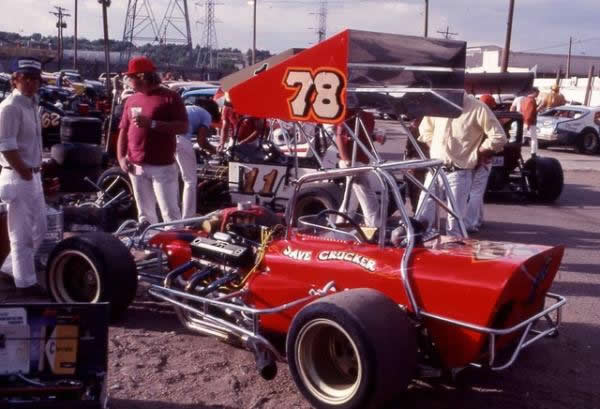 Dave Crocker began racing in 1967 and soon realized he had a special talent behind the wheel. He quickly began winning races and in 1975 and 1976 Dave won supermodified season championships at Englewood Speedway in his famous number “78.” He was so dominant during that time that he won one race in which he lapped every other car in the field. After the 1976 season, Crocker raced midgets for Dick Baty. He also competed in sprint cars on the dirt at Colorado National Speedway.
Dave Crocker began racing in 1967 and soon realized he had a special talent behind the wheel. He quickly began winning races and in 1975 and 1976 Dave won supermodified season championships at Englewood Speedway in his famous number “78.” He was so dominant during that time that he won one race in which he lapped every other car in the field. After the 1976 season, Crocker raced midgets for Dick Baty. He also competed in sprint cars on the dirt at Colorado National Speedway.
Ernie DiCroce
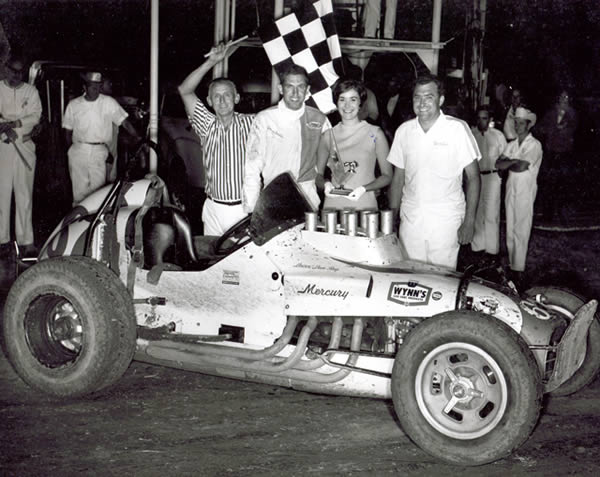 Ernie was born in Denver in 1937. His love of racing began as a youngster helping his father build and maintain a midget that ran locally. In the 50’s, Ernie became involved in local racing at Lakeside Speedway and later, experienced one of his biggest racing achievements in 1959 at the Daytona 500 when he was crew chief for Fritz Wilson. They ran 2nd to Lee Petty in the qualifying race.
Ernie was born in Denver in 1937. His love of racing began as a youngster helping his father build and maintain a midget that ran locally. In the 50’s, Ernie became involved in local racing at Lakeside Speedway and later, experienced one of his biggest racing achievements in 1959 at the Daytona 500 when he was crew chief for Fritz Wilson. They ran 2nd to Lee Petty in the qualifying race.
In the early 60’s Ernie built his first sprint car; a CAE kit car with a Mercury engine. At that time, many of Ernie’s friends and family knew little about sprint cars, but that would soon change. Ernie was instrumental in rallying many racers to get involved in sprint car racing. By the mid 60’s, the DiCroce Brothers “67” was ready to race with first driver, Sam Sauer, and later followed by Kansas farmer, Dave Ross who drove most of the races in the 60’s.
Ernie was a long time car owner and supporter of the Big Car Racing Association. He served on the board, and consistently fielded a car, traveling extensively throughout the country with his dog Shawn by his side. In the 70’s, Ernie fielded a Trostle chassis with a Chevrolet engine. Friends introduced Ernie to Jan Opperman and the two became life-long friends. Jan would later drive Ernie’s car when returning to racing after a serious head injury. Jan suggested Ernie give an unknown “kid” named Doug Wolfgang a chance to drive his car at the Sedalia mile. That was the beginning of Ernie and Doug’s close friendship.
Some, but not all of the other racers who drove for Ernie in the 70’s included, Larry Clark, Mike Gregg, Lonnie Jensen, Dick Sutcliff, Van May, Tom Corbin, Keith Heightshoe, and Buddy Taylor. Closer to home, Ernie was involved with the Rocky Mountain Midget Racing Association, wrenching Harry Conklin’s midget and along with driver Sam Sauer, they were a competitive force in midget racing. Harry and local Lakeside racer, Blu Plemmons, were some of Ernie’s earliest influences in racing.
In the mid 70’s, Ernie turned his love of the sport into a business selling sprint car parts out of his garage. He traveled with Doug Wolfgang and Sammy Swindell to promote his business and before long, Ernie fulfilled his dream and opened AAI Speed Equipment on Lamar Street; serving all forms of racing. Ernie also was a successful engine builder and loved spending time in his engine room and attending Gaerte’s annual engine building workshop. Ernie served the local racing community providing fuel and parts at events throughout Colorado. AAI became a local hub for many race teams when the Outlaws and other big races were in town. Ernie was generous and often lent parts and even engines so others could race. In the 80’s when there was a car shortage at Raceland, Ernie brought out his champ dirt car with Rick Carelli to run with the sprint cars.
In the late 70’s and early 80’s, Ernie fielded a Stanton chassis and USAC Champ Dirt Car. Absent a permanent driver, Ernie hired various drivers including; Ron Shuman, Leland McSpadden, Wally Pankratz, and many others. In later years, two of his drivers, Joe McCarthy and Keith Rauch joined the family as son-in-laws.
Another adventure brought Ernie back to his stock car roots, spending his weekends working for Chesrown Racing with Rick Carelli running the Winston West Series.
Ernie ran AAI until 2000 when health issues forced him to sell the business. Ernie’s legacy and love for racing lives on in his family, children and grandchildren. Anyone who ever met Ernie has a story to tell.
Ernie passed away in 2003.
Ted Foltz
 When Ted was 13 years old he would sit on the curb and watch the open wheel race cars drive up Colorado Avenue on race day. This was in the 1940’s, before they were required to use trailers to transport the cars. That was when he decided he wanted to drive a race car up Pikes Peak someday.
When Ted was 13 years old he would sit on the curb and watch the open wheel race cars drive up Colorado Avenue on race day. This was in the 1940’s, before they were required to use trailers to transport the cars. That was when he decided he wanted to drive a race car up Pikes Peak someday.
At age 18 Ted drove stock cars at the old Pikes Peak Speedway. As soon as he turned 21 in 1954 he found a ride driving for Ray Newbill. He spent a few years learning every curve and straight away by heart, improving his skills and getting better cars.
Ted bought his first car in 1960 at age 27. He also drove Sprint cars in Kansas, Nebraska and Oklahoma. He was a member of the United States Auto Club, Big Car Racing Association of Denver and the Colorado Auto Hill Climb Association.
In 1970, Ted won his first race on Pikes Peak in the Open Wheel Division in his #31 car. In 1975, he placed first in the Stock Car Division and in 1980 another first place in Open Wheel Division in car #31. He also placed second six times on Pikes Peak and was always in the top 10 finishers. He served a term on the Pikes Peak Auto Hill Climb Board of Directors and after 34 years retired from racing. He loved those years, especially the ones on Pikes Peak. He was always happy to share what he had learned with younger drivers just starting out. He knew how difficult it could be as well as how rewarding success could be. In addition to competing in the Pikes Peak Hill Climb for over 30 years, auto racer, Dan Gurney, asked Ted to drive the camera car in two Toyota commercials Dan made in Colorado and California.
Ted passed away in 2014
Tom Frantz
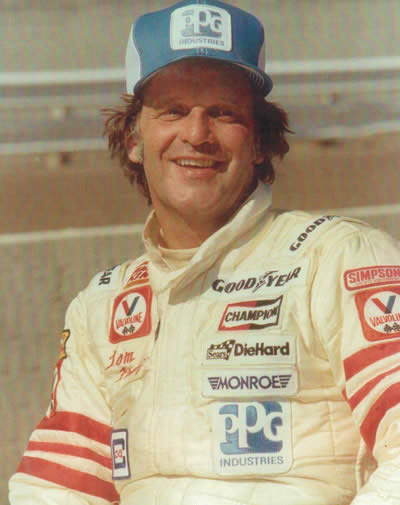 Tom Frantz was born in 1943 in Denver. As early as eight years old, Tom was entering and winning car races sponsored by the Cub Scouts. By 12-years-old he was building race cars. In the early 1960s, his career then began in earnest with Tom racing in a car he built and raced in the jet coupes division. In the late 1960’s, Tom also partnered with Dave Crocker to launch Dave’s racing career.
Tom Frantz was born in 1943 in Denver. As early as eight years old, Tom was entering and winning car races sponsored by the Cub Scouts. By 12-years-old he was building race cars. In the early 1960s, his career then began in earnest with Tom racing in a car he built and raced in the jet coupes division. In the late 1960’s, Tom also partnered with Dave Crocker to launch Dave’s racing career.
In 1971, Tom won all but one race he entered at Century 21 International Speedway (he finished second), and won both the Englewood Speedway and Century 21 International Speedway Supermodified Season Championships. As a result of this accomplishment, Tom is believed to be the only person to have won two championships at two different speedways during the same season in Colorado. Tom also held track records at Englewood Speedway, Century 21 International Speedway and Pikes Peak Speedway in the supermodified division. He achieved these feats driving in a car he built that featured one of the first off-set motors to be used in supermodified racing.
Tom also built supermodifieds for Jim Opperman, who drove the car to the 1974 Englewood Speedway Supermodified Season Championship, and for Larry Kassel.
He then moved into midget car racing and drove in the Rocky Mountain Midget Racing Association for the Schleiger Brothers and Roger Mauro. He also competed in sprint cars and stock cars in the late 1970s.
He made his United States Automobile Club Championship Car debut in 1975, where he made six starts, with two 11th place finishes and competitive drives in every event. He then moved on to Indy Cars. During the 1979 season he finished 20th in points and registered a career-best 9th place finish at Trenton Speedway in the Championship Auto Racing Teams Champ Car series.
Tom went on to work with Bill Tempero to help launch the American Indy Car Series and to become a successful CART and USAC car owner. During this time he helped begin the careers of such notable drivers as Bob Frey.
However, with all his success in racing, he still considers his greatest accomplishment is being a heart transplant survivor.
Bob Olds
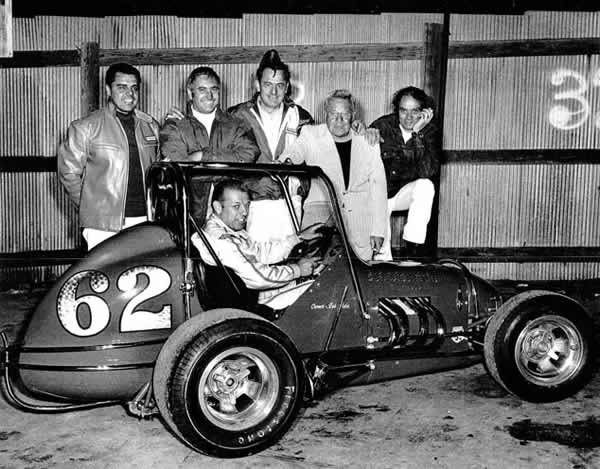 Bob Olds was born in 1927 in Denver. At age 13, while on his paper route in Park Hill, he was invited into Buddy Martinson’s garage to polish wheels and clean his midget racer. He did such a good job that the crew even snuck him into the pits at Gilmore for Turkey Night. Bob went to East High School and bought a 31 Model A Roadster for $120, took off the fenders, and started drag racing all over town, including timing and speed trials at Lowry Field and old Tower Road – which is why he is a charter member of the Denver Timing Association.
Bob Olds was born in 1927 in Denver. At age 13, while on his paper route in Park Hill, he was invited into Buddy Martinson’s garage to polish wheels and clean his midget racer. He did such a good job that the crew even snuck him into the pits at Gilmore for Turkey Night. Bob went to East High School and bought a 31 Model A Roadster for $120, took off the fenders, and started drag racing all over town, including timing and speed trials at Lowry Field and old Tower Road – which is why he is a charter member of the Denver Timing Association.
He continued drag racing until joining the Army in 1945 and when on leave he would help Harry Duff and Bob Van Buskirk work on their midgets. In 1946, he bought a Ford roadster (an old Pikes Peak car) and raced it at Englewood Speedway for a few years. Starting in the late 1940s and into the 1960s, Bob travelled to races all over the country and worked on pit crews with 1948 national midget champion, Johnny Tolan, and local drivers Joe Giba, and Buddy Shay.
In the early 1950s, Bob took his 32 Ford Coupe with a blown Flathead to Bonneville and turned 107 mph, but wanted to go faster, so Bill Kenz loaned him some wheels and tires and he got up to 112 mph. While there, he met Tom Beatty and helped him work on his belly tanker. Doing him a favor, Tom let Bob drive his car on the trip out where he turned 186 mph, and Tom did the return trip and ran 192 mph. Bob never lifted and was puzzled by his slower speed so Tom finally told him that he had a headwind and it wasn’t his fault.
He also worked on Leo Dobry’s pit crew for Indy style cars at Centennial Racetrack, and on the Pikes Peak car of Bus Hammond, who won there in 1953. During the month of May each year from 1959-1965, Bob went to Indianapolis, Indiana. Doing whatever he could to help his friend and car owner, Myron “Buz” Osborn, Bob was on the pit crew, and was also the body and paint man for numerous cars including the Radsco Battery Cable Special, the Myron Osborn Special, the Greenman-Casale Offy, the Denver Chicago Special (Watson-Offy), cars sponsored by Denver Chicago Trucking, White Spot Restaurant, Apache Airlines laydown Offy, and, the Wilbur Clark rear-engine Offy.
From the early 1970s through the 1980s, Bob had many celebrated Colorado drivers in his midget racers, including: Sammy Sauer, Jim Beckley, Don Wilson, Gene Pastor, and Frank Mantello. Because Bob’s cars were clean, competitive, and considered first class rides, he also had several notable, national champion drivers, including: Bob Olivero, Sleepy Tripp, Larry Rice, Bob Wente, Lonnie Caruthers, Doug Wolfgang (1st Midget drive in Bob Olds’ Lulu’s Honker Offy), Steve Cannon, and Danny McKnight.
In 1974, Bob bought one of the early VW powered midgets from LTC in Costa Mesa, California. Bob’s son Scott began re-building the VW engines for his dad, and in 1975, Larry Rice set a one lap record at Englewood Speedway of 15:39 in the Bob Olds Motors VW (also known as Lulu’s Luv Bug). In 1977, Bob hired Sam Sauer to drive and Frank Peterson to build the engines; the team worked well with a track record at Colorado National Speedway (dirt) of 18:47 and victories in eight trophy dashes, eight heats, and eight main events resulting in the 1977 Owner’s championship for Bob and crew. In 1978, Bob was elected president of the Rocky Mountain Midget Racing Association, but tragedy struck on May 20th at CNS in the first heat race of the season when Sam Sauer was killed in a violent North turn crash in Bob’s new VW midget. After Sammy’s death, Bob ran his cars competitively for a few more years and helped numerous other racers set-up their midgets and sprint cars.
Through the 1980s, his son Dave ran a Formula Ford in SCCA and other local clubs, usually finishing in the top 10 during his first year, but after Bob tweaked on his car a few times and provided some instruction, Dave consistently finished in the top five. With a Fine Arts degree from Denver University, Bob is an accomplished artist and has created hundreds of paintings, including some beautiful, professional quality paint jobs on numerous race cars, and even airplanes. Currently, Bob uses his artistic gifts painting Hall of Fame drivers and cars at our favorite tracks of yesteryear, and he shares his mechanical expertise with his sons and other Colorado Vintage Oval Racers with their vintage racecars, all while running a successful car sales business for more than 44 years.
Bob Olds passed away in 2014.
Russell “Doc” Simpson
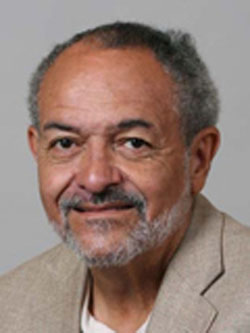 Russell “Doc” Simpson grew up in Bridgeville, Pennsylvania. His love affair with racing began at a very young age, as both his father, RG and his uncle, Ronald were involved in racing. As a matter of fact, Ronald became the first black mechanic to work at the Indianapolis Motor Speedway. After his uncle Ron was killed during World War II, Doc’s dad would go to Heidelberg Raceway to visit with Ron’s old friends. He would bring Russ, at the age of four or five, along with him – stoking his affection for motorsports.
Russell “Doc” Simpson grew up in Bridgeville, Pennsylvania. His love affair with racing began at a very young age, as both his father, RG and his uncle, Ronald were involved in racing. As a matter of fact, Ronald became the first black mechanic to work at the Indianapolis Motor Speedway. After his uncle Ron was killed during World War II, Doc’s dad would go to Heidelberg Raceway to visit with Ron’s old friends. He would bring Russ, at the age of four or five, along with him – stoking his affection for motorsports.
At an age of seven, Doc and his father built a go kart in the bathroom of their house, much to the dismay of his mother. He began racing the go kart in Bridgeville and Allentown, Pennsylvania. He also used the go kart to deliver newspapers; he always had a need for speed!
Doc’s participation in motorsports went up a notch in his early teen years when a friend of his, Mike Kosky, let him start hanging around Mike’s brother, Butch, as he worked on and raced his dragster. When Butch went to Vietnam, Mike and Doc began racing the car.
While they were very good at racing, they also got into trouble at home. Neither Mike nor Doc had told their parents they were racing and they were caught when a photo ran of them in the winner’s circle at a track in Salem, Ohio. To make matters worse, they were both under 16 – so neither of them had a driver’s license.
Doc went on to attend college at Colorado State University. There, he majored in chemistry, so that he could learn about racing fuels. Upon graduating, he moved back to Pennsylvania, where he began working for a pharmaceutical company.
He returned to Denver soon after to attend medical school at the University of Colorado. It his during this time he met his wife, Kathy. After graduating from medical school, Doc began his medical practice, which he continued for more than 35 years.
It was at this time that he also found a way to blend two of his greatest loves – medicine and auto racing. Beginning in the 1970s Doc became the track doctor for Colorado National Speedway and Rocky Mountain Speedway during their sprint car and midget car events. He also served as the track physician at Lakeside Speedway during midget car events and as a track physician during the Denver Grand Prix Champ Car race.
Outside of Colorado, he also served as a track physician for Indianapolis Raceway Park and the historic Belleville (Kansas) High Banks during the Belleville Nationals. He was also a member of the safety crew for Phoenix International Raceway.
Doc worked tirelessly to improve the safety efforts at all the racetracks for which he was a part. He trained safety crews, required ambulances to be on site during racing events and required a flight for life helicopter to be on site for open wheel events.
Outside of racing, Doc Simpson gave back to his community in many additional ways. He served as a Golden Gloves physician – providing physicals before bouts and as the rink side physician during bouts. He also served as a team doctor for the Denver Nuggets for four years. Doc Simpson passed away in January 2024.
Butch Speicher
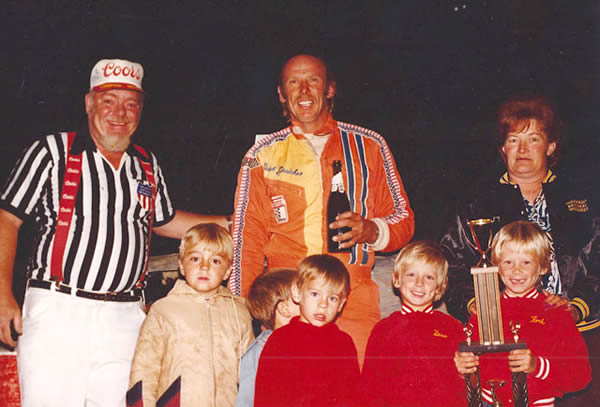 Butch Speicher was born in 1942. Growing up near old Lakeside Speedway in north Denver, Butch grew to love racing. In 1966, he built a ’55 Chevy stock car and began his racing career. His “lucky red” race car, #73, changed often through the years as his natural talent for racing developed rapidly, advancing him to the fastest and most competitive racing in Colorado, the late model division.
Butch Speicher was born in 1942. Growing up near old Lakeside Speedway in north Denver, Butch grew to love racing. In 1966, he built a ’55 Chevy stock car and began his racing career. His “lucky red” race car, #73, changed often through the years as his natural talent for racing developed rapidly, advancing him to the fastest and most competitive racing in Colorado, the late model division.
Butch raced his red “73” throughout the region at Colorado National Speedway, Englewood Speedway, Century 21 Speedway and Lakeside Speedway. He also competed on tracks throughout the Midwest and Western United States. Butch’s favorite track was the half mile clay oval at Colorado National Speedway. He raced most of his 27+ year career at Colorado National Speedway, where he won four Late Model Season Championships. This included winning the 1988 Late Model Season Championship in the last year of dirt track racing at Colorado National Speedway.
Butch’s passion for racing motivated him to purchase a race track located in Fort Morgan, Colorado in 1989. He immediately changed the name to I-76 Speedway and totally renovated the entire grounds. As track owner and operator, Butch now has a very successful racing facility hosting six racing divisions weekly, a winter enduro series and special events throughout the season.
Dave Strickland, Jr.
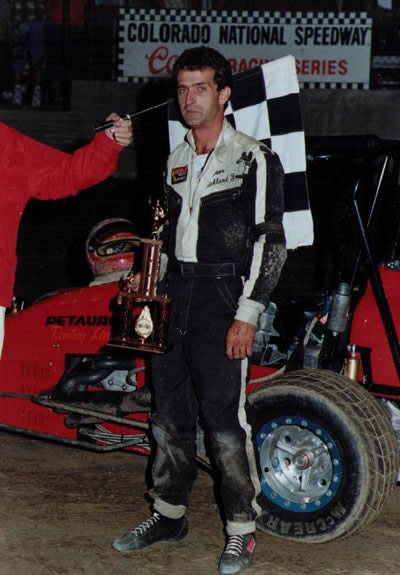 Dave Strickland Jr., also known as “Kid Strickland” until he won his first championship, started racing Midgets on May 21, 1977. His career lasted through 2004. He is the son of USAC Midget star, three-time Rocky Mountain Midget Racing Association Champion and 2004 Colorado Motorsports Hall of Fame inductee Dave Strickland Sr.
Dave Strickland Jr., also known as “Kid Strickland” until he won his first championship, started racing Midgets on May 21, 1977. His career lasted through 2004. He is the son of USAC Midget star, three-time Rocky Mountain Midget Racing Association Champion and 2004 Colorado Motorsports Hall of Fame inductee Dave Strickland Sr.
Dave Jr’s desire to drive race cars came at a young age as he and his sister Sabrina traveled all over the world to watch their father race USAC midgets, sprint cars and Indy cars. Dave Jr. raced for a number of very well known car owners during his career locally and national. The list includes Colorado owners Richard Kaylor, Del Melching, Roger Mauro, Dave Williams, Petauro Racing, Ken Heffner, Vern Shaver, Lonne Smith, Danny Montini, Harry Conklin and Pat Myers. National owners were Dave Ellis, Don Welch, George Zarounian, Terry Klatt, Tempe Jim Williams, Terry Caves, Tony Passeralli, and Bob Bower. In Australia Dave Jr. drove a midget for Ross Kiehne of Australia. Following in his father’s footsteps in midget racing; Dave Jr. also won three RMMRA Season Championships driving for Petauro in 1986 and two RMMRA Season Championships driving for Terry Klatt in 1992 and 1998. Dave Jr. raced sprint cars with the World of Outlaws, California Racing Association, Sprint Car Owners of Arizona and All Star Association. His first year in a USAC sprint car was in 1988, while driving for Sid Blandford. In this first year, he won USAC “Rookie of the Year” and the USAC Sprint Car Season Championship. His second USAC Sprint Car Season Championship was won in 1990 driving for Mick Dyer. Dave also drove sprint cars for Donny Young, Harry Conklin, Bill Hardy and Bill Gibson. In his midget racing career Dave Jr. won 59 total A-Features, including 53 RMMRA, four USAC in Colorado and two AIMS events. Dave Jr. was inducted into the Bellville High Banks Hall of Fame in 2005. He was awarded a lifetime member award in 1986 by the RMMRA.
Mike Troxel
 Born in Wichita, Kansas in 1948, Mike Troxel got his first taste of success on the track as a youngster racing go-carts. In his early 20’s, he rebuilt the small block “fuelie” out of his 64′ Corvette in the basement. His dad wasn’t sure which was the bigger challenge; rebuilding the engine or getting it out of the basement.
Born in Wichita, Kansas in 1948, Mike Troxel got his first taste of success on the track as a youngster racing go-carts. In his early 20’s, he rebuilt the small block “fuelie” out of his 64′ Corvette in the basement. His dad wasn’t sure which was the bigger challenge; rebuilding the engine or getting it out of the basement.
Mike moved to Colorado in 1968 and worked as a machinist. Like most kids in the day, he got his first taste for speed on the streets of Denver. He transitioned to racing at Bandimere Speedway out of a concern for safety or more likely a concern for getting a ticket. He also went to work for Bandimere’s machine shop and eventually their parts store.
Over the years Mike raced his Corvette and a 70′ Nova before graduating to a front engine dragster. He won the “Rookie of The Year” honors in 1977 as well as “Top Sportsman” and the Competition Eliminator Championship for the National Hot Rod Association’s Division 5. Based on those accomplishments he won the Colorado Motorsports Hall of Fame “Top Colorado Drag Racer” award in 1978.
To afford his “racing habit”, Mike honed his skills in welding, chassis building, painting and bodywork. This allowed him to build his own rear engine dragsters. He worked during the day at the Peek Brothers chassis shop to pay the family bills and after hours opened his first small machine shop business. The success of his machine shop allowed Mike to move up to the newly designated NHRA Pro Comp class as the company grew.
Mike raced in the NHRA Pro Comp class which eventually became Top Alcohol Dragster (TAD). He eventually partnered with friends Joe Lankton and Mike Webb on the “Mighty Mouse” car. In 1986, he sold his business and committed to racing full time. That commitment paid off in 1987 when he won his first national event, the US Nationals, NHRA’s most prestigious event. His “overnight success” surprised a lot of people in the sport who were unaware of his history. In that same year he won several divisional events, and a “best-engineered car” award to round out his breakthrough season.
Mike returned in 1988 with a win at the season opening NHRA Winter Nationals. That was a shot across the bow of his competitors, sending the message of what was to come. He had an unprecedented season, winning six NHRA national events, as well as two IHRA events and five NHRA divisional races. No other driver in the class had won that many national events in one season. He went on to win the 1988 Top Alcohol Dragster NHRA season championship in commanding style.
In 1989, he teamed up with Gary Sumek driving the LENCO dragster. That season was cut short by a serious crash, though the team did return later that season. Mike decided to focus on his newly established machine shop, which he ran through most of the 90’s before returning to competition. In 1996, almost a decade after his first win in the class, he went to the final round at three NHRA national events. He continued to own and tune competitive cars in the class and though he never returned to the driver’s seat he coached his drivers on to winning careers.
Colorado had some of the toughest competitors in the TAD class, producing national champions in 1981 with Brian Raymer and in 1987 with Denny Lucas before Mike’s championship in 1988. Racing against some of the toughest competitors in the class and in the tricky high altitude conditions made Mike a better racer. Mike’s proudest moment was seeing his daughter, Melanie, launch her own professional career.
His competitiveness and passion for racing continued until his passing in 2000.
Don Styes
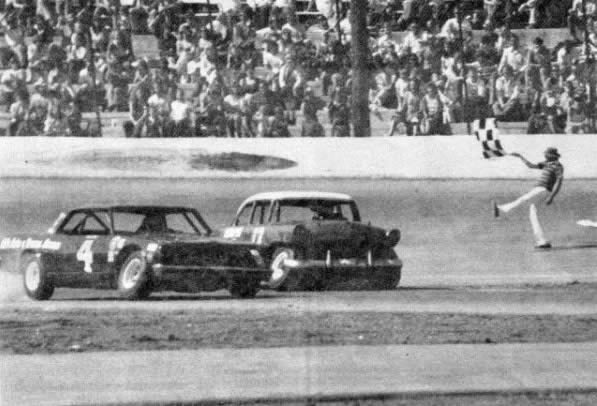 Don Styes had an interest in motorsports from an early age. He was born and raised in Englewood and was attracted to Englewood Speedway from the time it was built, first as a spectator, then as a racer and later through many official capacities.
Don Styes had an interest in motorsports from an early age. He was born and raised in Englewood and was attracted to Englewood Speedway from the time it was built, first as a spectator, then as a racer and later through many official capacities.
In 1953, he was on the pit crew for car number 74 and tried his hand as a driver. Once he was involved in an accident and rolled a car from turn two and nearly the length of the back straight. This mishap did not dampen his spirit. The next year he and Bob Weeks became co-owners of car 73. Don drove the car and shared the mechanical duties with Bob. This partnership lasted two years, but the demands of work and being a father took their toll and resulted in the pair selling the car. Later, he returned to being a co-owner and driver of car number 74, this time with his brother-in-law, Bill Nordeen. This endeavor was also short lived, lasting just one year.
After his career as a racer, Don continued to support racing and remained a part of the racing scene. For many years, he performed various roles in the Rocky Mountain Stock Car Racing Association (RMSCRA) and Englewood Racing Association (ERA). Later, he went on to become a well-known flagman.
In the RMSCRA, Don was hired as a judge, Executive Secretary, Treasurer and was elected President three times. As President he introduced the use of Robert’s Rules of Order for all meetings. In 1960 he was instrumental in guiding the organization through all the changes that occurred after the track was paved.
When ERA was formed in 1965, Don was elected President four times (1968, 69, 71& 75) and continued to lead the organization through the changing times of the ever-evolving modified cars and the figure-eight cars. While both divisions became faster, he continually worked with board members and tech committee members to increase safety.
Milestones of his leadership included ensuring there was little delay between events at each race and making sure each segment of the show was carried out with efficiency and professionalism. He also strived to make sure RMSCRA and ERA were well represented at public events, primarily the Saber’s Hot Rod Show and the St. Patrick’s Day parade. Another of his priorities was to continually work with the Denver Post and Rocky Mountain News sports department writers to gain recognition for local racing. His work proved beneficial as several articles featuring owners and drivers were published in the newspapers.
Following his driving career and officiating careers, he went on to become one of the most well-known flagmen in Colorado motorsports and was recognized for his no-nonsense attitude and showy style. He flagged races featuring motorcycles, midgets, modifieds, late models, figure-eights, chargers and mini stocks. He served as a flagman for Englewood Speedway, Lakeside Speedway and Colorado National Speedway.
Don passed away in 1995. His example of sportsmanship, fairness, integrity – and of course his eye for safety – continues throughout his family’s racing endeavors and commitment to the racing community. Don is a recipient of the 2013 Jerry Van Dyke Memorial Award.
Johnny Haberman
Johnny Haberman became an active member of the Colorado Automobile Racing Club in 1953. In his early years, he served as a top notch pitman and goodwill ambassador for Fritz Wilson. In 1963, he became a flagman and Lakeside Speedway, and over the years earned the reputation for being an outstanding flagman and ambassador for Lakeside Speedway. Johnny is a recipient of the 2013 Jerry Van Dyke Memorial Award.
(Please note: Biographical information for Johnny Haberman was extremely limited. We have done our best to present accurate information.)
